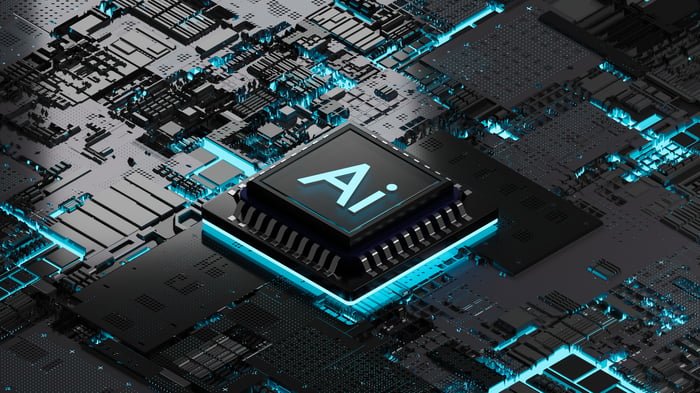Today, we are excited to introduce an autonomous AI agent that can analyze and classify software without assistance, a step forward in cybersecurity and malware detection. The prototype, Project Ire, automates what is considered the gold standard in malware classification: fully reverse engineering a software file without any clues about its origin or purpose. It uses decompilers and other tools, reviews their output, and determines whether the software is malicious or benign.
Project Ire emerged from a collaboration between Microsoft Research, Microsoft Defender Research, and Microsoft Discovery & Quantum, bringing together security expertise, operational knowledge, data from global malware telemetry, and AI research. It is built on the same collaborative and agentic foundation behind GraphRAG (opens in new tab) and Microsoft Discovery (opens in new tab). The system uses advanced language models and a suite of callable reverse engineering and binary analysis tools to drive investigation and adjudication.
As of this writing, Project Ire has achieved a precision (opens in new tab) of 0.98 and a recall (opens in new tab) of 0.83 using public datasets of Windows drivers. It was the first reverse engineer at Microsoft, human or machine, to author a conviction case—a detection strong enough to justify automatic blocking—for a specific advanced persistent threat (APT) malware sample, which has since been identified and blocked by Microsoft Defender.
Malware classification at a global scale
Microsoft’s Defender platform scans more than one billion monthly (opens in new tab) active devices through the company’s Defender suite of products, which routinely require manual review of software by experts.
This kind of work is challenging. Analysts often face error and alert fatigue, and there’s no easy way to compare and standardize how different people review and classify threats over time. For both of these reasons, today’s overloaded experts are vulnerable to burnout, a well-documented issue in the field.
Unlike other AI applications in security, malware classification lacks a computable validator (opens in new tab). The AI must make judgment calls without definitive validation beyond expert review. Many behaviors found in software, like reverse engineering protections, don’t clearly indicate whether a sample is malicious or benign.
This ambiguity requires analysts to investigate each sample incrementally, building enough evidence to determine whether it’s malicious or benign despite opposition from adaptive, active adversaries. This has long made it difficult to automate and scale what is inherently a complex and expensive process.
Technical foundation
Project Ire attempts to address these challenges by acting as an autonomous system that uses specialized tools to reverse engineer software. The system’s architecture allows for reasoning at multiple levels, from low-level binary analysis to control flow reconstruction and high-level interpretation of code behavior.
Its tool-use API enables the system to update its understanding of a file using a wide range of reverse engineering tools, including Microsoft memory analysis sandboxes based on Project Freta (opens in new tab), custom and open-source tools, documentation search, and multiple decompilers.
Reaching a verdict
The evaluation process begins with a triage, where automated reverse engineering tools identify the file type, its structure, and potential areas of interest. From there, the system reconstructs the software’s control flow graph using frameworks such as angr (opens in new tab) and Ghidra (opens in new tab), building a graph that forms the backbone of Project Ire’s memory model and guides the rest of the analysis.
Through iterative function analysis, the LLM calls specialized tools through an API to identify and summarize key functions. Each result feeds into a “chain of evidence,” a detailed, auditable trail that shows how the system reached its conclusion. This traceable evidence log supports secondary review by security teams and helps refine the system in cases of misclassification.
To verify its findings, Project Ire can invoke a validator tool that cross-checks claims in the report against the chain of evidence. This tool draws on expert statements from malware reverse engineers on the Project Ire team. Drawing on this evidence and its internal model, the system creates a final report and classifies the sample as malicious or benign.
PODCAST SERIES
The AI Revolution in Medicine, Revisited
Join Microsoft’s Peter Lee on a journey to discover how AI is impacting healthcare and what it means for the future of medicine.
Preliminary testing shows promise
Two early evaluations tested Project Ire’s effectiveness as an autonomous malware classifier. In the first, we assessed Project Ire on a dataset of publicly accessible Windows drivers, some known to be malicious, others benign. Malicious samples came from the Living off the Land Drivers (opens in new tab) database, which includes a collection of Windows drivers used by attackers to bypass security controls, while known benign drivers were sourced from Windows Update.
This classifier performed well, correctly identifying 90% of all files and flagging only 2% of benign files as threats. It achieved a precision of 0.98 and a recall of 0.83. This low false-positive rate suggests clear potential for deployment in security operations, alongside expert reverse engineering reviews.
For each file it analyzes, Project Ire generates a report that includes an evidence section, summaries of all examined code functions, and other technical artifacts.
Figures 1 and 2 present reports for two successful malware classification cases generated during testing. The first involves a kernel-level rootkit, Trojan:Win64/Rootkit.EH!MTB (opens in new tab). The system identified several key features, including jump-hooking, process termination, and web-based command and control. It then correctly flagged the sample as malicious.
The binary contains a function named ‘MonitorAndTerminateExplorerThread_16f64’ that runs an infinite loop waiting on synchronization objects and terminates system threads upon certain conditions. It queries system or process information, iterates over processes comparing their names case-insensitively to ‘Explorer.exe’, and manipulates registry values related to ‘Explorer.exe’. This function appears to monitor and potentially terminate or manipulate the ‘Explorer.exe’ process, a critical Windows shell process. Such behavior is suspicious and consistent with malware that aims to disrupt or control system processes.
Another function, ‘HttpGetRequestAndResponse_174a4’, performs HTTP GET requests by parsing URLs, resolving hostnames, opening sockets, sending requests, and reading responses. This network communication capability could be leveraged for command and control or data exfiltration, common in malware.
The binary also includes a function ‘PatchProcessEntryPointWithHook_12b5c’ that patches the entry point of a process by writing a hook or trampoline that redirects execution to a specified address. This technique is commonly used for process injection or hooking, allowing malware to alter process behavior or inject malicious code.
Other functions related to sending IOCTL requests to device drivers were identified, but their maliciousness could not be conclusively determined without additional context.
Overall, the binary exhibits multiple indicators of malicious behavior, including process manipulation, network communication, and code injection techniques, suggesting it is likely malware designed to interfere with system processes and communicate with remote servers.
The second sample, HackTool:Win64/KillAV!MTB (opens in new tab), was designed to disable antivirus software. Project Ire correctly identified the code that locates and disables antivirus programs, providing evidence that the file was malicious.
In one section of the code, however, the system misidentified a function as anti-debugging behavior. To maintain accuracy, the system used the validator tool to flag the claim as unsupported. The issue was later resolved by updating decompiler rules, but this example illustrates how Project Ire navigates uncertainty during analysis. Figure 2 shows the corresponding report.
The binary contains several functions indicative of malicious intent. The function register_and_log_known_processes_140001000 logs and registers process names associated with antivirus and security software, such as ‘avp.exe’, ‘avpui.exe’, and ‘360Tray.exe’. It calls another function, TerminateProcessesByNameSubstring_1400010f4, which enumerates system processes and terminates those whose names contain specified substrings. This behavior is typical of malware attempting to disable or evade security software by killing their processes.
Another function, check_and_handle_special_state_14000502c, performs checks on a global variable and triggers software interrupts if certain conditions are not met. While the exact purpose of these interrupts (int 0x29 and int 0x3) is unclear, they could represent an anti-debug or anti-analysis mechanism to detect or interfere with debugging or tampering attempts. However, this assumption could not be fully validated against expert statements.
Other functions include initialization routines and simple logging wrappers, but the core malicious behavior centers on process termination targeting security software. This indicates the binary is designed to compromise system security by disabling protective processes, a hallmark of malware such as trojans or rootkits.
Real-world evaluation with Microsoft Defender
The more demanding test involved nearly 4,000 “hard-target” files not classified by automated systems and slated for manual review by expert reverse engineers.
In this real-world scenario, Project Ire operated fully autonomously on files created after the language models’ training cutoff, files that no other automated tools at Microsoft could classify at the time.
The system achieved a high precision score of 0.89, meaning nearly 9 out of 10 files flagged malicious were correctly identified as malicious. Recall was 0.26, indicating that under these challenging conditions, the system detected roughly a quarter of all actual malware.
The system correctly identified many of the malicious files, with few false alarms, just a 4% false positive rate. While overall performance was moderate, this combination of accuracy and a low error rate suggests real potential for future deployment.
Looking ahead
Based on these early successes, the Project Ire prototype will be leveraged inside Microsoft’s Defender organization as Binary Analyzer for threat detection and software classification.
Our goal is to scale the system’s speed and accuracy so that it can correctly classify files from any source, even on first encounter. Ultimately, our vision is to detect novel malware directly in memory, at scale.
Acknowledgements
Project Ire acknowledges the following additional developers that contributed to the results in this publication: Dayenne de Souza, Raghav Pande, Ryan Terry, Shauharda Khadka, and Bob Fleck for their independent review of the system.
The system incorporates multiple tools, including the angr framework developed by Emotion Labs (opens in new tab). Microsoft has collaborated extensively with Emotion Labs, a pioneer in cyber autonomy, throughout the development of Project Ire, and thanks them for the innovations and insights that contributed to the successes reported here.























